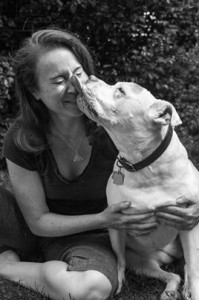The International Association of Animal Hospice and Palliative Care has just recently released their updated Animal Hospice Guidelines. While the document is geared towards animal health professionals, I wanted to include a link to this paper for those who are interested in learning more about the field of animal hospice. If your current veterinarian is not well-practiced in hospice and palliative care, please feel to pass these guidelines along to him/her. Animal hospice is still in its infancy in the US, so I believe it is important to spread the word amongst as many practicing veterinarians as possible.
Of particular interest to dog parents like you and me, is Section III, “Pain, suffering, wellbeing, and quality of life in the animal hospice and palliative care patient.” Of particular note was the information on Quality of Life Assessment, and this excerpt:
“They encourage us to ask “what is important to this animal in his or her life?” and to remember that each individual animal has unique likes and dislikes. For example, loss of mobility might negatively impact a dog who loves to play ball and Frisbee more significantly that it would a dog whose favorite activity is sleeping in a sunny spot under a window. Individual animals also have unique capacities to adapt to change. A disabled animal may continue to enjoy his or her favorite activities if creatively modified to fit the animal’s condition. A disabled animal may also develop “new” favorite activities.”
This made me reflect on my recent experience with Scooby. Scooby was a dog who lived to eat. He enjoyed going on walks, being close to his people and getting his massages. At the end, when Scooby no longer wanted food, could not even stand to go for a walk without assistance and did not seem to register touch or he presence of our family very well, I knew that this was not the quality of life deserving of my sweet boy. It was undignified that he could not defecate, except when lying down, and that sometimes, even with assistance to get out to urinate, he struggled and was unbalanced anyway. This was how I knew that his quality of life had degraded to the point where I could not let him continue on this path.
In the end, Scooby was at home, where he loved to be, surrounded by the people who loved him most in the world, and even a few people who did not know him that well, but recognized how special he was. He passed peacefully and simply, in a way that honored him. I am proud that we could give that to him.




